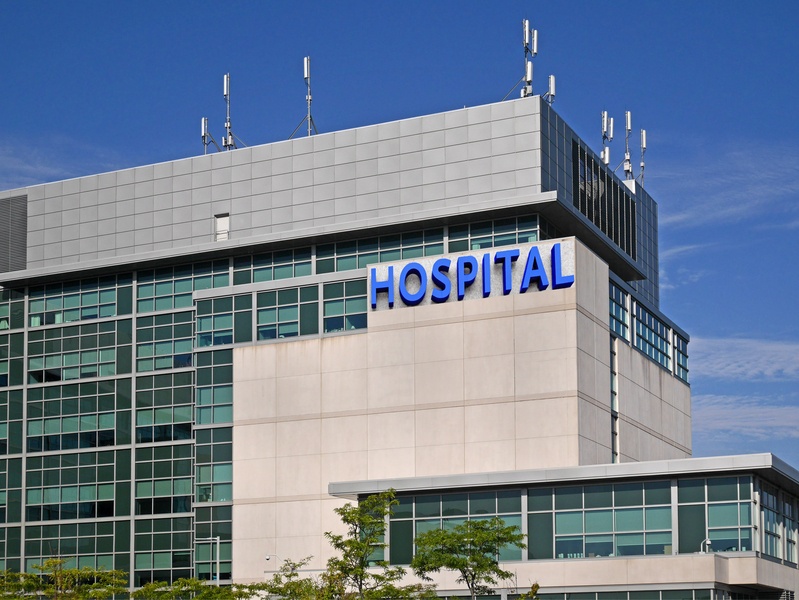In my book “On the Brink: A Fresh Lens to Take Your Business to New Heights,” I write about one of my marketing firm’s favorite experiences working with a medical center that was literally “on the brink.”
In 2006, I was hired as a consultant at a 400-bed Midwest medical center that was losing close to $20 million a year, was leaking patients to its two competitors, had an entrenched staff (many of whom had been there for their entire careers) who didn’t want to change, and was having trouble establishing a connection with the population it was supposed to serve. On top of all that, it was not considered the area’s go-to medical facility unless you were poor, uninsured, seriously sick or injured, burned or a high risk mother-to-be.
The center’s leadership team was looking for someone to help them better understand their institution’s brand positioning so they could reinvigorate growth, re-brand the hospital for a changing market, and provide internal staff with a strong identity which would hopefully engender pride in their work. Here’s what we did.
How do you change a hospital’s image while staying true to its roots?
Where to begin? Where I always do, with the tools and methods of a corporate anthropologist who likes to hang out and observe what people are doing and how they feel about their organization.
I knew that changing the way the market saw this medical center was going to require some clever communication strategies, and that curing its financial woes meant successfully expanding its patient base beyond the uninsured. Plus, to change the public’s feelings about the place, we needed to know what those feelings were.
All of this was the perfect setting for culture probes, story-listening and observational research. No one could really tell us what was happening. We had to go searching for it ourselves.
Step 1: To see something with fresh eyes, you first have to see it the way others do
Doing observational research meant that I had to fit into the community and look at the medical center as the residents of its city did. To begin the process, I carried out interviews in the hospital and in the community, focusing on perceptions of the medical center as it actually was and as people thought it was becoming.
There were many places to observe the 2,500 staff members going about their daily work. I spent time in the lobby, listening to their conversations. I hung out in the cafeteria, inviting them to sit down and talk with me. I attended monthly staff meetings where I observed acute tensions over issues that had more to do with politics and control than with healthcare itself. And I witnessed the frustration surrounding patient- and family-centered care when patients and their family members were not adequately included in important healthcare decisions.
I also conducted observational research among the patients themselves, watching how they interacted with doctors, nurses and staff. I spent time in the clinics and specialty centers, as well as in doctors’ offices, listening to patients discuss their conditions and watching the physicians respond to them (or not).
Step 2: You conduct culture probes to uncover the stories that will shape the new direction
I knew that if the medical center was ever going to regain a secure financial footing, all of those involved needed to get a better understanding of the communities it was currently serving and the additional ones it needed to serve. How to do this? Interviews and storytelling sessions with leaders in the community, using the anthropological tool of culture probes.
Significantly, one recurring theme that emerged from our probes was the vital role the hospital played in taking care of the region’s citizens when they were in dire need of help: after injury, sickness, birth or trauma. Our interviewees had a deep-seated admiration — a real fondness — for the center, yet were very reticent to go there for their own care.
Step 3: You turn your research results into an action plan
As I looked at the research we were amassing, I was able to identify 5 key areas that urgently needed to be addressed if the medical center was going to shift from barely hanging on to thriving:
1) Build on the current familiarity and affection people had for the hospital
2) Overcome the negative emotions associated with the center — specifically, a fear of the location (a dangerous neighborhood in a high-crime city) and a feeling of being alone and unsupported when having procedures
3) Leverage a dedicated focus on the patient that was emerging in the newly-created patient- and family-centered care initiative
4) Capitalize in the individualized, personal care which patients and their families received within the hospital and after they were discharged
5) Highlight innovative approaches to delivering care that would markedly differentiate the center from its competitors
Directly because of the research we conducted, we were able to implement a number of new programs that helped rebrand the hospital, improve the patient experience, and make the local and regional communities change the way they thought about the facility.
We worked with the management team to launch, among other things:
- a very successful children’s hospital
- the You Are Never Alone program consisting of a team of volunteers to greet and guide patients around the hospital, visiting them at their bedside and serving as liaisons between their families and the medical center
- the hospital’s first Men’s Health Summit, attracting more than 1,000 men and their families and encouraging men to focus on their health
All of these “brandable” initiatives served to make the medical center’s patient experience tangible, focused, and most important, differentiating. It wasn’t just another hospital now; it was clearly a place that truly wanted its patients to benefit from the care it provided.
Step 4: You build a brand and have everyone “live it”
Finally, the marketing team and I developed a consistent branding strategy for both the internal staff and the external community. Our branding story centered around the role the medical center played in keeping the people in its community healthy and out of the hospital. Today, the population health movement is going strong. But in 2010, we were ahead of the curve.
To accomplish this, we used advertising, billboards, events and other communication methods to show how the medical center was working to make individuals and the community-at-large healthy. We overhauled the staggeringly out-of-date website; we initiated social media platforms, particularly Facebook, to tell personal stories from patients, families, even doctors; and we gave people a vehicle for celebrating new babies, birthdays, survivor anniversaries and more.
Then, we were able to witness a powerful new story emerge and take hold
All of our efforts successfully revamped what the medical center was about and how the public now thought about it. Despite a near-bankrupt local economy and anemic financials, the hospital was being transformed, producing an astonishing $7 million surplus – something not even dreamed of a few years before.
Amazing what a little anthropology can do, wouldn’t you say?
Read the complete story
The complete tale of this medical center’s amazing transformation is a much longer story, chronicled in “On the Brink: A Fresh Lens to Take Your Business to New Heights.” Here, you can also read the 6 other client case studies I share so you can better understand how a little anthropology can help your business grow. There is also a chapter on anthropological tools you can use, the same ones we use at Simon Associates Management Consultants to help our clients better “see, feel and think” about their business with fresh eyes.
Enjoy your own journey of discovery.
Ready for growth? Contact us.
We do a lot of work with healthcare organizations of all sizes on innovation and change, helping them realign their business models in order to achieve measurable and lasting growth. For a free consultation on how we might be of help to your organization, please contact us. We’d love to hear from you!
From Observation to Innovation
Andi Simon
Corporate Anthropologist | President
Simon Associates Management Consultants





